We’ve seen some incredible NVMe SSD drives released lately, from the breakneck speed of the Kingston Renegade through to the affordable Crucial P5 Plus. The latest drive to enter the market emerges from the same camp as our favourite PCIe 4.0 SSD, the WD_Black SN850, but as the name suggests, it isn’t gunning for the top spot. No, the new WD_Black SN770 is intended to be a bit more of a value proposition compared to its speedier sibling.
The main way it has achieved this is by being a DRAM-less SSD drive. This saves a big chunk of the manufacturer’s bill of materials, and thanks to advances in the latest controllers, it can be surprising how little impact this has on performance. Such drives are slower, don’t get me wrong, but this new SN770 still quotes read and writes of 5,150MB/s and 4,900MB/s respectively. Not bad.
As those figures should infer, this means that you’re looking at a PCIe 4.0 SSD. You’ll need a supporting CPU and motherboard to make the most of it, although there’s nothing to stop you from sliding it into a PCIe 3.0 slot and maxing out the bandwidth there—you’re going to be limited to a peak throughput of around 3,500MB/s if you do though.
The drive itself is a low-profile affair, with this 1TB model boasting a single NAND flash module at the back (actually a rebranded Kioxia BiCS5 112-Layer TLC chip) and the SanDisk controller towards the connector. Western Digital rarely reveals much about its controllers, and that’s the case once again here.
Other than the large sticker in the middle of the drive, that’s pretty much your lot. There’s nothing of note on the backside of the drive. Given how much space is unused here, I can’t help wondering if Western Digital could make a version of this drive that would fit inside the Steam Deck. Pickings are certainly slim for the 2230 form factor as it is. But anyway…
WD Black SN770 1TB Specs
The first thing we do with any new SSD is to fill it up to get a real sense of what the performance will be like once it’s actually been used, as opposed to its factory-fresh perfection. This also gives us a chance to see at what point the dynamically allocated SLC cache runs out.
On this 1TB drive, you’re looking at around 130GB of 2GB/s transfers before dropping down to just 400MB/s after that. For reference, the Crucial P5 plus was good for 300GB before hitting the limits of the cache, so the SN770 certainly trails here.
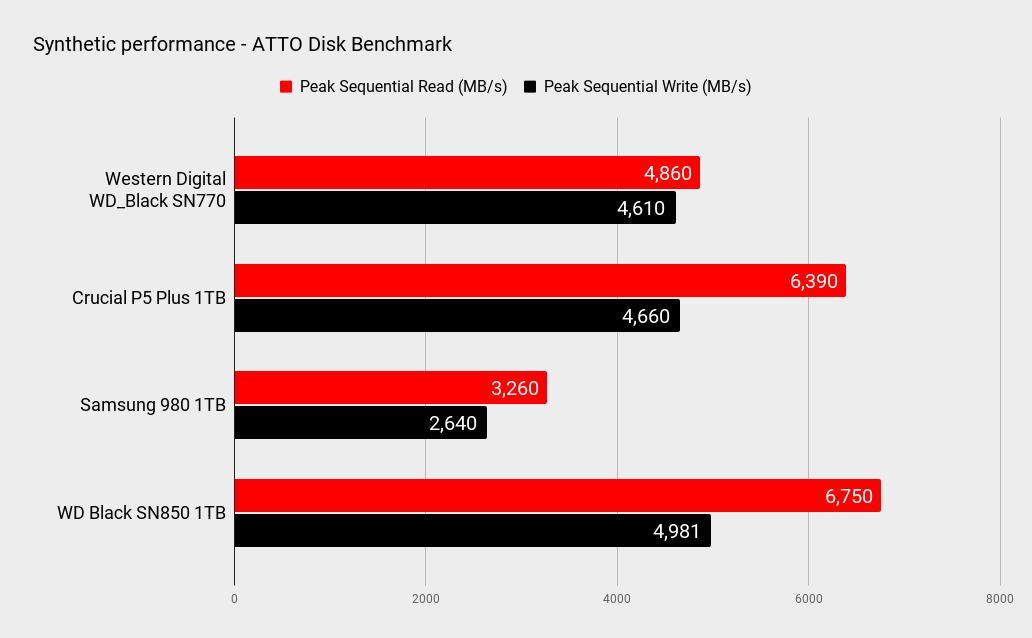
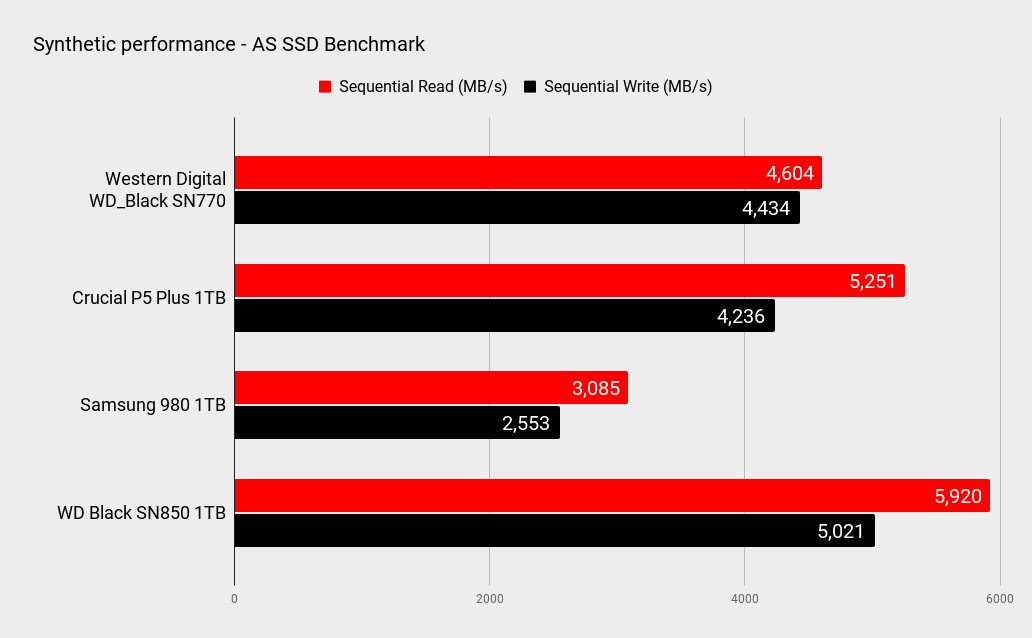
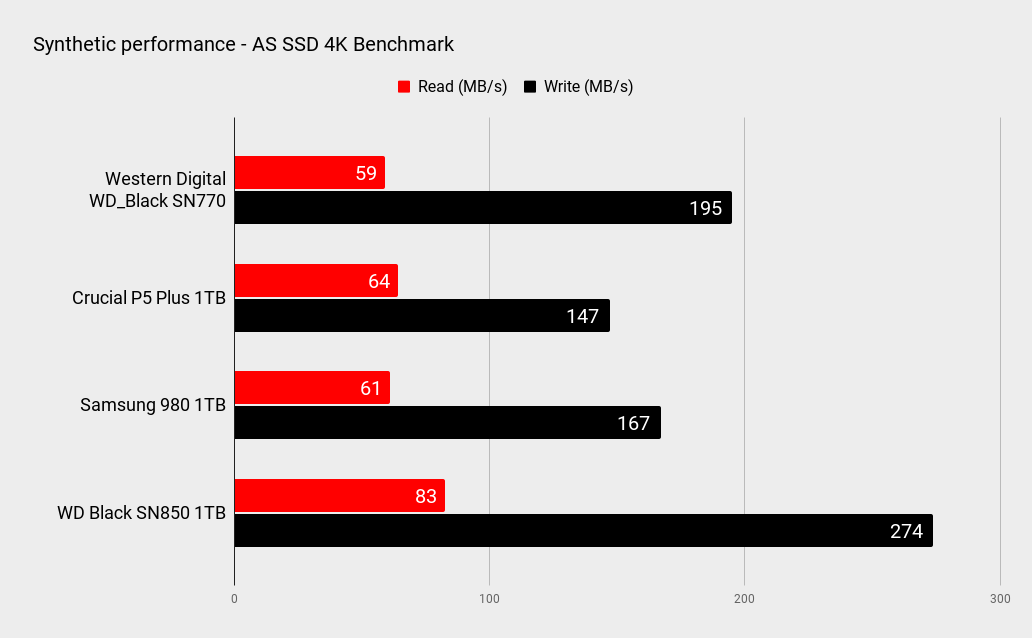
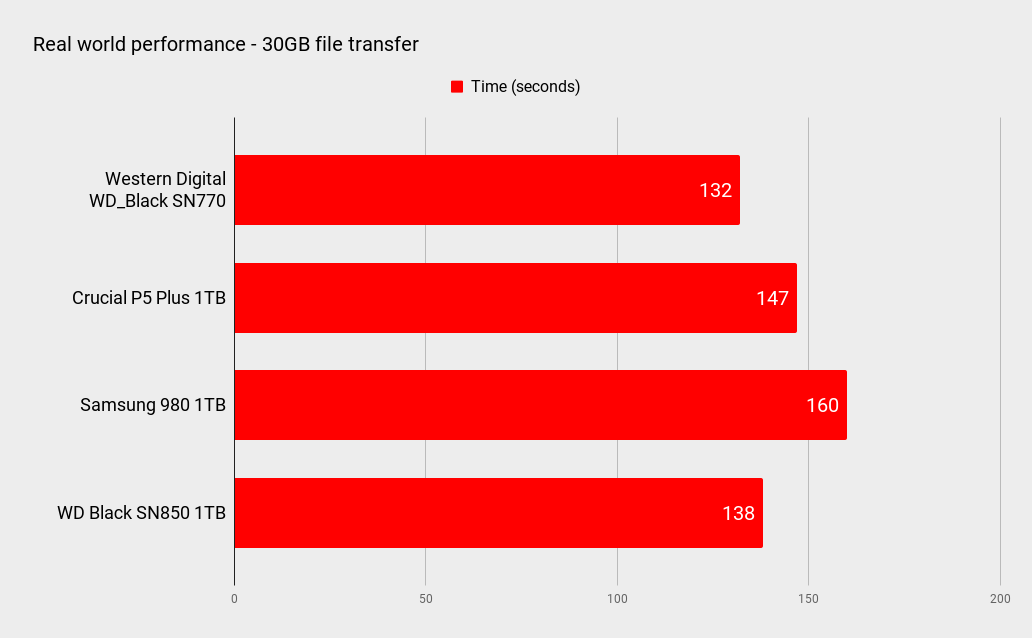
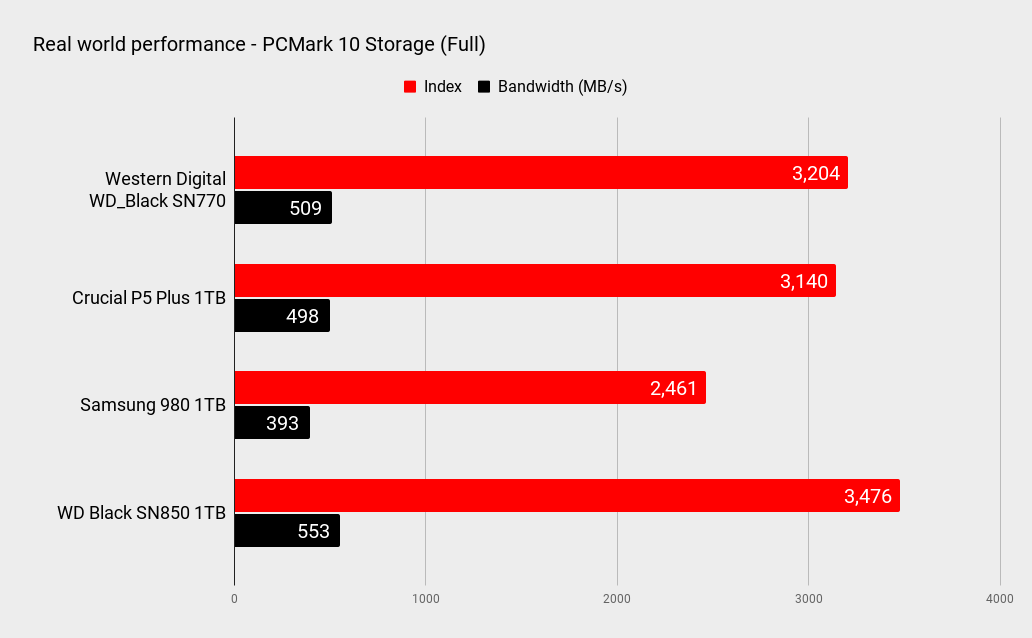
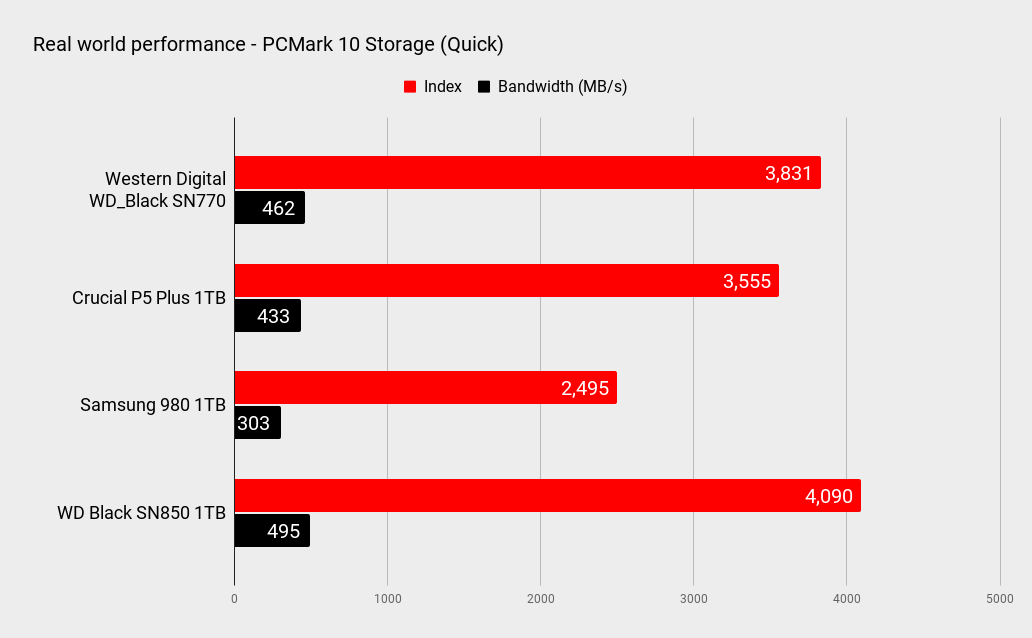
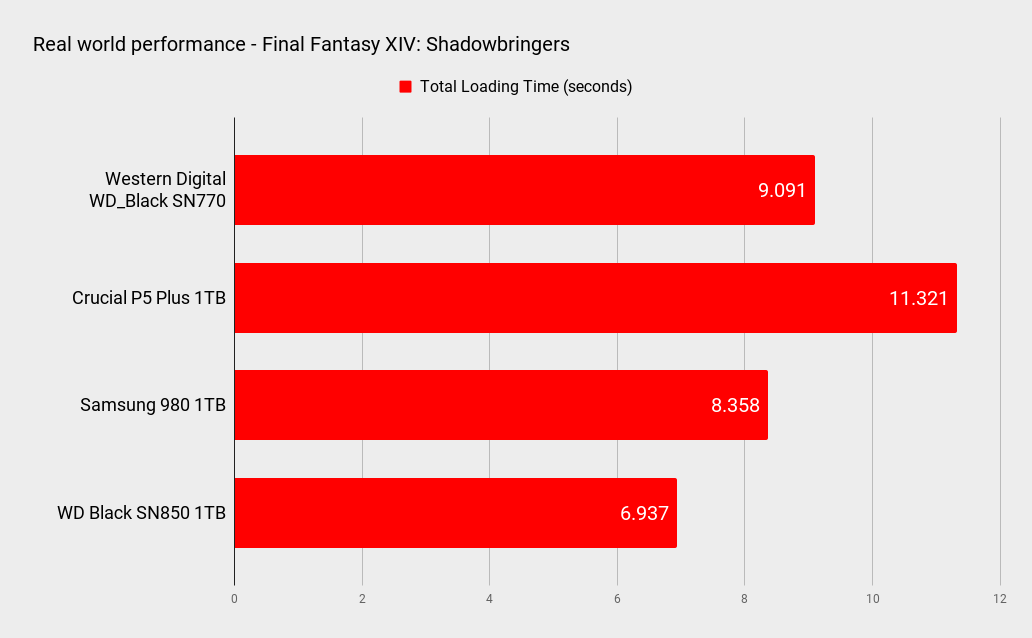
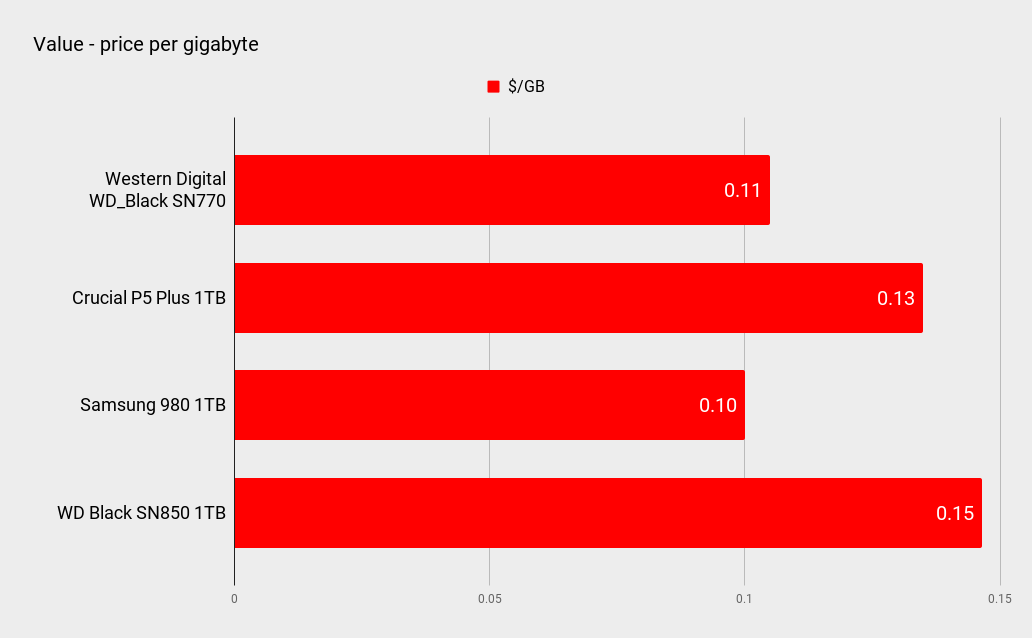
When looking at the performance of this drive, it’s worth keeping the price in mind, which can ask for almost double what this goes for. For comparison, I’ve pitched the $105 Western Digital SN770 1TB against the similarly budget-oriented $135 Crucial P5 Plus 1TB, the DRAM-less $100 Samsung 980 1TB (a PCIe 3.0 SSD), and our favourite SSD right now, the $150 WD_Black SN850, which has recently enjoyed some tempting price cuts.
The synthetic performance as recorded by ATTO and AS SSD show the SN770 trails the Crucial P5 in terms of reads, although the writes are much closer. The 4K performance is relatively impressive though and shows that the SN770 has something to offer in this crowded marketplace. It’s not too surprising that this drive outperforms Samsung’s DRAM-less offering, as that is a PCIe 3.0 drive, after all, but the extent to which it does is impressive.
It’s worth noting that this drive can get hot when pushed, just like the SN850 in fact. It hit 76°C after a long day of testing, although that was without any direct cooling on it at all, not even a heatsink. It should be fine in most systems, especially if your motherboard does come with some cooling solution.
It’s in the real-world tests where the SN770 really struts its stuff though, with little between it and the Crucial P5 Plus. In very real terms, you’d be hard pushed to tell the difference between the two in day to day operations, and given this is the cheaper drive right now, that counts for a lot. If you need better performance, then the SN850 is clearly the better drive, but you will pay considerably more for it.
For SSDs to reach far more people, affordability is key
In many ways, that’s the story of the WD_Black SN770. It isn’t the fastest drive around, nor is it quite the cheapest (although it is close), but it does balance the two better than most. If you’re on a tight budget but want to enjoy speedy PCIe 4.0 performance, then there’s plenty to like here. It’s closer to first-gen PCIe 4.0 performance, sure, but if you want faster than this, you’re going to have to drop considerably more cash.
It wasn’t too long ago that the very idea of a DRAM-less NVMe SSD was met with scorn. The Samsung 980 was dismissed by many before the results were even seen, even though it wasn’t that bad a performer for a PCIe 3.0 SSD. The SN770 looks to improve the lot for the DRAM-less though, and with numbers like these, it deserves to. Phison also has a PCIe 4.0 DRAM-less controller on the way, so expect more drives like this shortly.
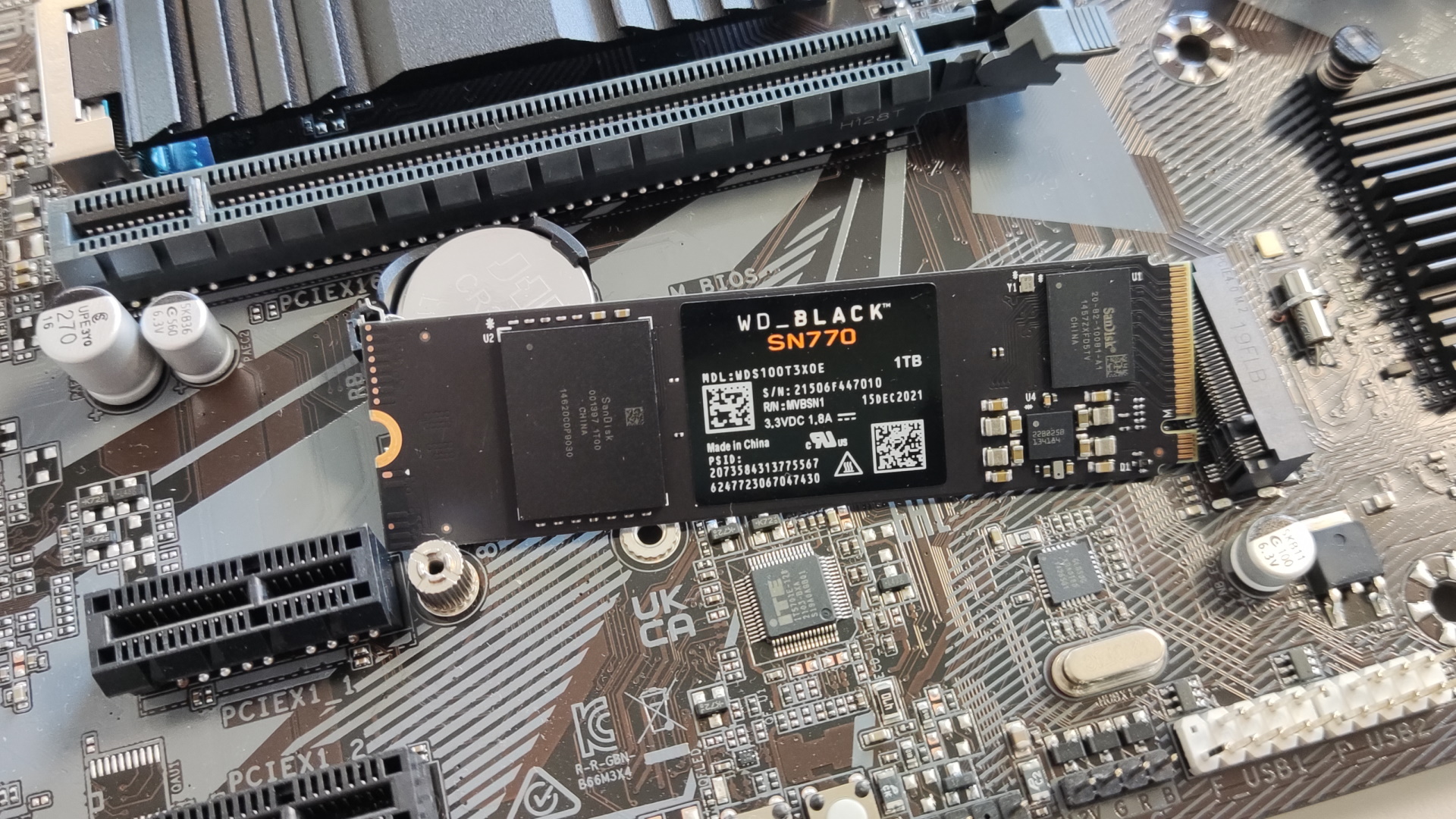
The reason DRAM-less drives are important is simply that they are cheaper. For SSDs to reach far more people, affordability is key, and this is a good way of getting closer to, if not below, that $100 for a 1TB drive barrier.
With DirectStorage promising big improvements for our games, the more gamers that have fast drives in their machine, the more tempting it is for developers to actually use it. It’s going to be a long journey for sure, and it’ll probably be years before developers are really pushing SSDs, but still, it’s good to plan ahead.
The only problem here is that we don’t know for sure how fast a drive needs to be for DirectStorage. We know some developers have been targeting 5,000MB/s, which is where the SN770 sits in our testing. So it should be good, and for the money, it’s very tempting. If you’re a serious gamer though, we’d recommend going a little bit higher up the product stack, and grabbing that WD_Black SN850.

